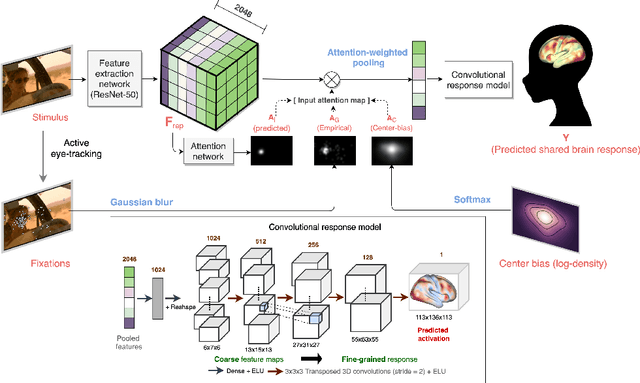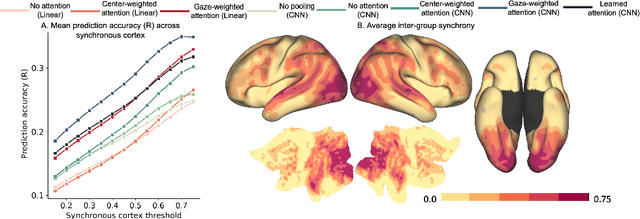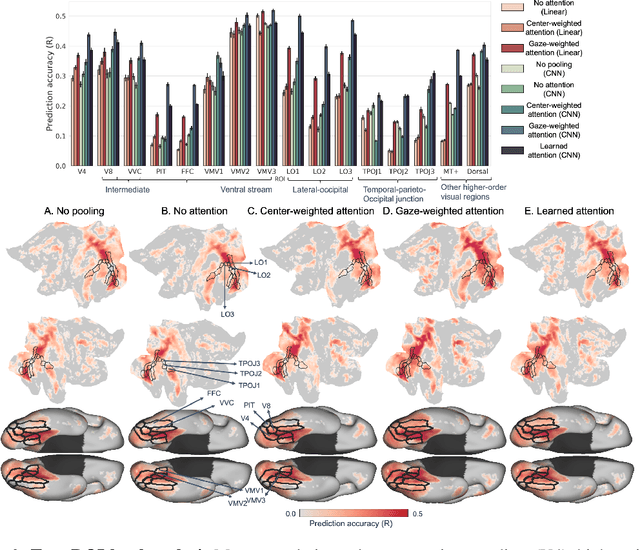Neural encoding with visual attention
Paper and Code
Oct 01, 2020



Visual perception is critically influenced by the focus of attention. Due to limited resources, it is well known that neural representations are biased in favor of attended locations. Using concurrent eye-tracking and functional Magnetic Resonance Imaging (fMRI) recordings from a large cohort of human subjects watching movies, we first demonstrate that leveraging gaze information, in the form of attentional masking, can significantly improve brain response prediction accuracy in a neural encoding model. Next, we propose a novel approach to neural encoding by including a trainable soft-attention module. Using our new approach, we demonstrate that it is possible to learn visual attention policies by end-to-end learning merely on fMRI response data, and without relying on any eye-tracking. Interestingly, we find that attention locations estimated by the model on independent data agree well with the corresponding eye fixation patterns, despite no explicit supervision to do so. Together, these findings suggest that attention modules can be instrumental in neural encoding models of visual stimuli.
 Add to Chrome
Add to Chrome Add to Firefox
Add to Firefox Add to Edge
Add to Edge